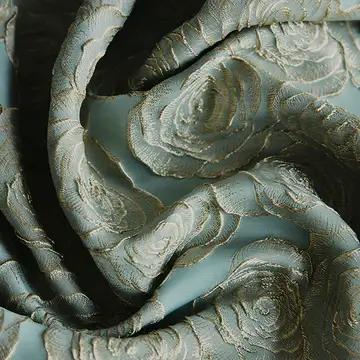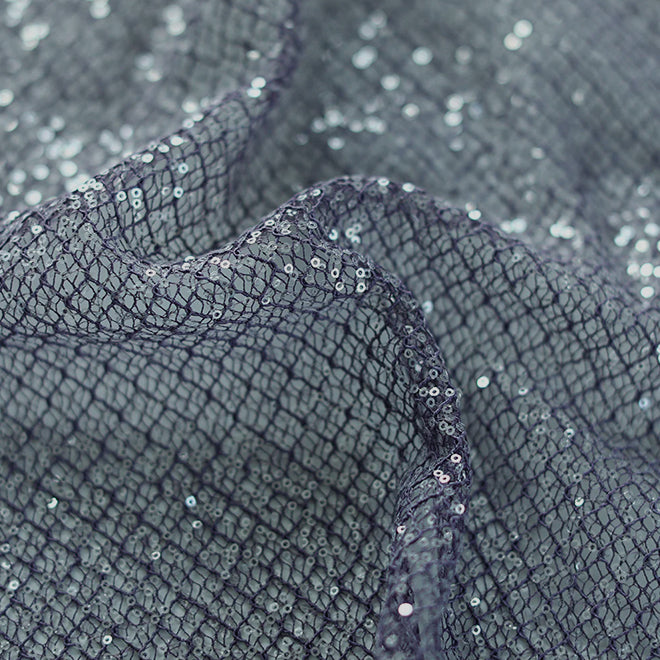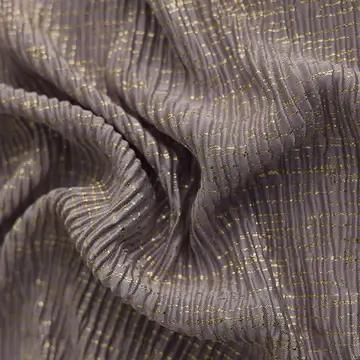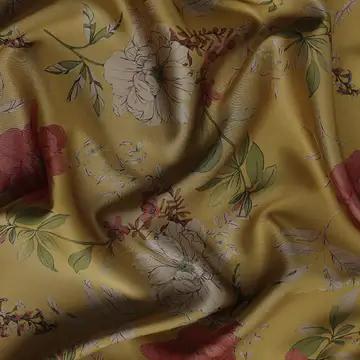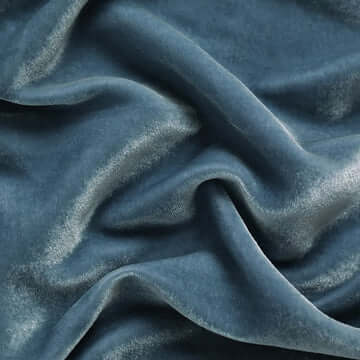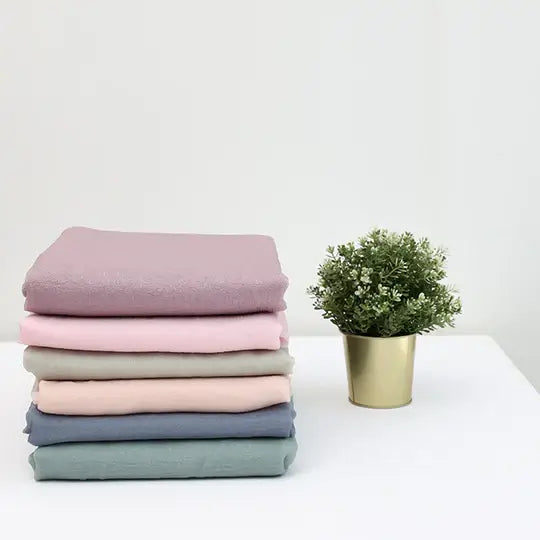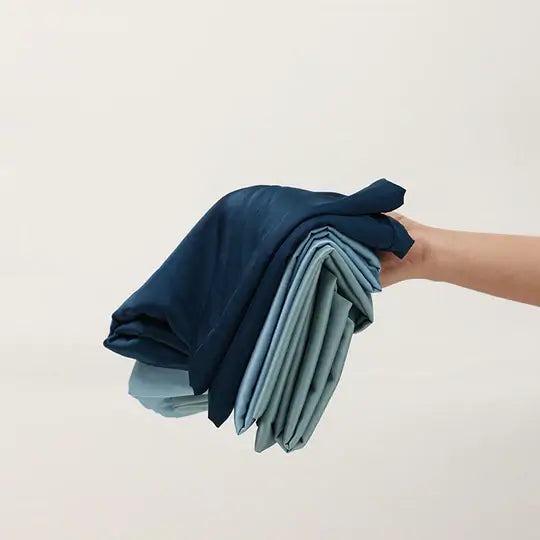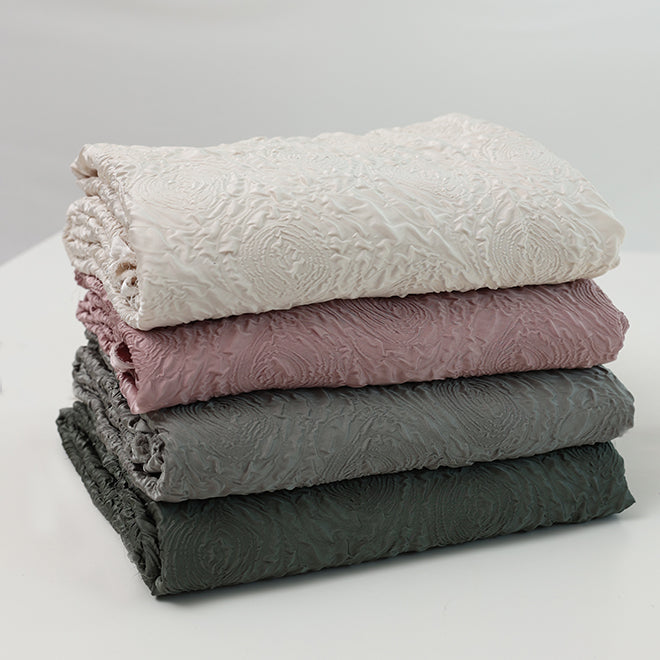Fashion Archive - Know All About Organza Fabric
Organza fabric material is renowned for having a rough, flowing texture. Organza is a kind of material that is see-through and has a light feel. Because of its diversity and adaptability, it continues to be one of the most popular fabrics in home décor, fashion, and architecture. Organza fabric is delicate, therefore, to keep its shape, it needs to be hand-washed or dry-cleaned.
Let us explore the fabric in more detail and see the variety of ways in which it can be used.

What Is Organza Fabric?
Organza is a lightweight fabric usually made from silk, but can also be manufactured from polyester and nylon due to the advancements in manufacturing technology. It is popular for bridal wear because of its sheer and lightweight nature. Its texture also helps to add structure and dimension to garment designs.
Silk organza fabric material, like most silk fabrics, originates in China, the home of silk cultivation. Production of organza expanded across the world due to trade along the Silk Road, which connects China and Europe.
Even now, China is still the world's largest organza manufacturer and exporter. Numerous organza-weaving mills are present along the Yangtze River, especially in the Zhejiang province. Organza is largely exported from India in significant quantities.
What Are the Characteristics of Organza?
Organza fabric material has several distinctive qualities, such as:
- Transparency: Organza is a translucent material. Due to the tiny holes created by the weave, you can see through it. The higher the quality of the fabric, the more holes per inch.
- Thinness: Because the threads are twisted tightly before weaving and are weaved to create transparency, the fabric is incredibly thin.
- Sheerness: Organza reflects and captures light waves brilliantly. This is a result of the way the fibres are treated and twisted before weaving, in addition to the inherent qualities of silk.
- Stiffness: Organza fabric material is not as soft and flowing as typical silk but rather slightly stiffer due to the acid treatment used on the strands prior to weaving. On the other hand, designers looking to create sculptural silhouettes will find the wiry feel and rigid drape advantageous.
- Breathability: Organza fabric has openings that make it easy for air to travel through, making it incredibly breathable and light.
- Simple to Tear and Wrinkle: Because organza is so thin, even with its strong individual fibres, it catches and tears quickly and is quite prone to creases. Fortunately, tears are sometimes difficult to spot because the fabric is frequently layered in clothing.

Types Of Organza Fabrics
There are several varieties of organza fabric, each with special qualities, textures, and applications. Depending on how they utilise organza fabric for their crafts, people have a preference for certain types of it. You will discover the various kinds of organza fabrics in this section.
- Plain Organza
The most basic and widely used kind of organza fabric is called plain organza. It has a clear finish and a straightforward weave. Because of its versatility, plain organza is used to make gowns and decorative things.
- Crystal Organza
Compared to regular organza, crystal organza has a more obvious and distinct weave. It is well-known for having a sharp texture and sheen that shimmers in the sun.
- Silk Organza
The texture of silk organza is exquisite and refined. It is naturally shiny and has a smooth feel. Silk organza is perfect for elegant clothing items such as veils, blouses, and couture gowns.
- Polyester Organza
Polyester organza is a less expensive alternative to silk organza. It is more accessible and resembles silk in both appearance and touch. It is likewise as sheer, transparent, and crisp as silk organza.
- Embroidered Organza
This organza fabric material features intricate embroidery designs. Embroidered organza adds richness and elegance to any work. It is commonly used for apparel for special occasions.
How Is Organza Used in Design and Fashion?
Organza is a staple in the world of formal attire, but it also has a lot of applications in interior design and organza fabric dress design.
- Evening wear: Organza is frequently used to provide extra dimension and shine to evening gowns, prom dresses, and other garments by layering it over more opaque materials like satin or silk. Designers can employ multiple layers of organza to create a sculptural dimension because the fabric is transparent. Organza can also be utilised as a dress or shawl overlay.
- Bridal gowns: Organza is utilised for bridal wear, including bridesmaid dresses and wedding gowns, because of its shiny, smooth texture, which, when draped and structured, provides soft, full silhouettes. Bridal veils are another common item made from this cloth.
- Home decor: Organza is a highly ornamental fabric that's frequently used for table runners and sheer drapes. It can also be used to decorate events with things like wedding arches, aisle runners, and seating accessories.
- Bags: Drawstring pouches for carrying small accessories like necklaces and earrings are commonly made of organza bags.
- Costumes: Organza's lovely flow and ability to capture stage lights make it a favourite choice for stage costumes, especially for dance costumes like tutus and skirts.

Wrapping Up
Fashion designers love organza fabric material because of their versatility. It gives gowns and dresses more refinement and offers a variety of design options. The range of simple and printed organza fabrics inspires individuals to express their creativity.
Visit the website of The House of Textiles to get access to a plethora of organza fabrics in diverse colours and designs. Pick the one that appeals to you the most, and place your order now.


